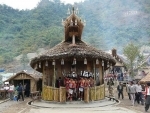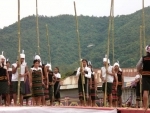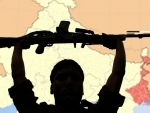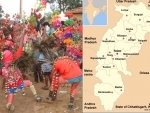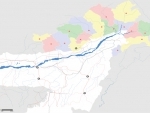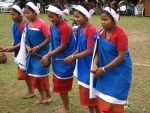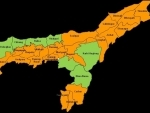Research Assistant, Institute for Conflict Management As long as we rely upon the hammer when a file is needed and press Islam into service to solve situations it was never intended to solve, frustration and disappointment must dog our steps.. The Munir Report, 1954
Nagaland: Rudderless Process, Aimless Violence
Research Assistant, Institute for Conflict Management As the violent incidents of last few months suggest, NSCN-K's decision to unilaterally call off the ceasefire, the split within its ranks, and the Union Government's failure to make any progress with regard to talks with NSCN-IM, could lead to greater violence in Nagaland and neighboring northeastern states. SFs, who had enjoyed clear respite from terror, will, in particular, face the brunt of escalating violence, if these developments continue. Intelligence inputs predict a spike in hit-and-run attacks on SFs over the coming days, particularly by NSCN-K militants operating from across the Indo-Myanmar border. SAIR Volume 13, No. 41, April 13, 2015
Research Assistant, Institute for Conflict Management On March 31, two Assam Rifles (AR) troopers identified as Havildar N.K. Dolly and Havildar B.N. Kshetri were killed and Rifleman G.D. Shastra was wounded in an ambush by cadres of the People's Liberation Army (PLA) at a location between Kamjong and Kongkan villages in the Hill District of Ukhrul. A PLA 'sergeant', Prem, was also killed in the incident. The PLA militants exploded an Improvised Explosive Device (IED), then rained bullets on the troops. Two IEDs were recovered during the subsequent search by Security Forces (SFs) in the area. On April 1, PLA claimed that the assault was carried out by a team of its 'tactical command'.
Maoists: Chhattisgarh: TCO Escalates
Research Assistant, Institute for Conflict Management .our subjective forces seriously lag behind the objective situation. Thus we see the contradiction, the glaring gap between the potential of the objective situation and the subjective capacities of the Maoist forces. The history of the world revolution teaches us that the principal way to overcome this is by waging revolution and advancing to victory.
Research Fellow, Institute for Conflict Management Two cadres of the Students Islamic Movement of India (SIMI) were killed in an encounter with the Police near Janakipuram in Nalgonda District of the newly constituted Telangana State, on April 4, 2015. One Police Constable was killed while another Policeman was injured during the encounter. Telangana Director General of Police (DGP) Anurag Sharma in an April 5 release, stated that the slain duo were identified as Mohammed Aijazuddeen, a native of Kareli in the Narsinghpur District of Madhya Pradesh (MP) and Mohammed Aslam alias Bilal, who hailed from Ganesh Talai in the Khandwa District of MP. Sharma added, "Aijajuddeen and Aslam have been the active members of Students Islamic Movement of India (SIMI) in Madhya Pradesh and were involved in acts of terror in India."
West Bengal: Maoist Decimation
Research Assistant, Institute for Conflict Management The Maoists, who were rampaging across the Jungal Mahal region of West Bengal in 2009-10, appear to be in no position to do anything to revive the movement in the State after the body blows that they suffered with the killing of politburo member Mallojula Koteswara Rao aka Kishanji, on November 24, 2011. Maoist activities have come to complete halt in the State since then. According to partial data collected by the South Asia Terrorism Portal (SATP), West Bengal recorded zero fatalities in all categories in 2014 and, so far, in 2015. According to Union Ministry of Home Affairs (UMHA) data, not even a single incident of Maoist violence was recorded in West Bengal in 2014, while just one incident was recorded in 2013.
Chhattisgarh: Counter-offensive amidst Losses
Research Associate, Institute for Conflict Management Continuing the momentum after the December 1, 2014, Kasalpar [Sukma] attack on Security Forces (SFs), in which 14 Central Reserve Police Force (CRPF) personnel, including two officers, were killed, Communist Party of India-Maoist (CPI-Maoist) cadres killed at least seven civilians in six incidents, and 10 SF personnel in nine incidents, while losing just three cadres in two incidents, as of February 25, 2015, in Chhattisgarh. Interestingly, there has not been a single major incident [resulting in a total of three or more casualties] in this period, indicating that the Maoists are going about their business steadily, without drawing much attention to themselves.
Arunachal Pradesh: Persisting Irritants
Research Assistant, Institute for Conflict Management Two civilian porters were killed and nine Assam Rifles troopers were injured in an Improvised Explosive Device (IED) blast at Monmao village, near the India-Myanmar border, in the Changlang District of Arunachal Pradesh, on February 6, 2015. One of the injured AR trooper succumbed to his injuries a day later. An unnamed source from the Khaplang faction of the National Socialist Council of Nagaland (NSCN-K) claimed that the attack was a joint operation by the NSCN-K and the Independent faction of United Liberation Front of Asom (ULFA-I), against the Indian Army. This is the only case of terrorism related killing in the State in 2015, thus far.
Research Associate, Institute for Conflict Management In the night of February 12, 2014, some 15 armed cadres of the Communist Party of India-Maoist (CPI-Maoist) hacked a tribal, identified as Samuel Badra (50), to death in the tribal-dominated Pattamunda village under Pallahara Police Station limits of Angul District. Maoists left some posters at the incident site claiming he was punished for being a 'police informer'.
Research Assistant, Institute for Conflict Management Tripura, the location of one of India's most virulent insurgencies, has now evolved into one of the most peaceful states in India's troubled Northeastern region. The state registered no terrorism-related fatalities through 2013, but the record was tarnished by four such fatalities in 2014, according to partial data compiled by theSouth Asia Terrorism Portal (SATP). In the process, the trend of continuous decline in such fatalities recorded since 2004 (with the exception of 2012) was reversed. In 2012, Tripura had recorded two fatalities (both militants) as against one (civilian) in 2011.
Andhra Pradesh: Maoists: Waning Support
Research Associate, Institute for Conflict Management Communist Party of India - Maoist (CPI-Maoist) cadres, along with a large number of armed militia members and sympathisers, attacked and destroyed an Ashram(hermitage) of a local spiritual guru, Jaggamdora Simhachalam akaSatyanarayana, at Gurramveedhi village in the G. Madugula mandal (administrative unit) of Vishakhapatnam District, Andhra Pradesh, in the night of January 17, 2015. Simhachalam was not at his Ashram at the time of the attack. Maoists beat up six persons present in the Ashram and set afire furniture, vehicles and a shed. Claiming responsibility for the incident the Korukonda 'local area committee', left pamphlets and hung a banner saying that the Ashram was attacked in retaliation to the killing of Sharath and militia member P. Ganapathi on October 19, 2014, and that Simhachalam would not be spared.
Nagaland: Evasive Reconciliation
Research Assistant, Institute for Conflict Management The relative peace achieved in Nagaland was further consolidated through 2014, as insurgency-related fatalities continued to decline. According to partial data compiled by the South Asia Terrorism Portal (SATP) the State recorded a total of 15 fatalities, including 11 civilians and four militants in 2014; as compared to 32 fatalities in 2013, including 11 civilians and 21 militants; a decline of 53.12 per cent.
Research Assistant, Institute for Conflict Management The trend of rising insurgency-related fatalities in Meghalaya continued through 2014, with a total of 76 fatalities, as compared to 60 in 2013, an increase of 26.67 per cent, according to partial data compiled by the South Asia Terrorism Portal (SATP). Consequently, the State continued to hold the dubious distinction of being the second-worst insurgency affected State in the Northeast in terms of overall fatalities, with Assam accounting for the highest number of fatalities at 305.Meghalaya secured this unenviable position for the first time in 2013.
Publisher: SAIR; President, Institute for Conflict Management
Jammu and Kashmir: Frantic Thrust
With major terrorist attacks intended to disrupt the electoral process in Jammu & Kashmir (J&K), India accused Pakistan of "mainstreaming terrorism", even as the first two of five phases of the State Assembly Elections conducted on November 25 and November 30, 2014, registered record turn-outs of 71.28 and 72.1 per cents, respectively. Evidently, the anxiety within the establishment at Islamabad has been pushed to a new level, and terrorist groups operating in J&K, directly under the aegis of Pakistan's external intelligence agency, the Inter-Services Intelligence (ISI), unleashed a series of attacks just two days after the first round of polls.






